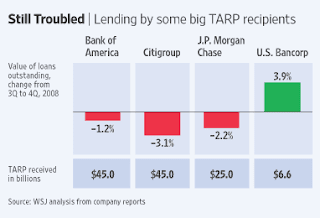Note: We are only one sponsor of the Metro Denver Survey, so we only archive the data online. To get the latest data, please contact the
Apartment Association of Metro Denver.
This is Metro Denver data ONLY. Statewide data will be available in February.
To download press release,
click here. FOR IMMEDIATE RELEASE
Contact: Ryan McMaken, Colorado Division of Housing - Colorado Department of Local Affairs
(303) 866-4651
January 28, 2008
Metro Denver apartment vacancies rise to 3-year high
Apartment vacancy rates in the Denver Metro area increased to 7.9 percent during the fourth quarter of 2008, rising from 6.1 percent during the same period last year. According to a report released today by the Apartment Association of Metro Denver and the Colorado Department of Local Affairs’ Division of Housing, 2008’s fourth-quarter vacancy rate is up from the third quarter rate of 6.5 percent, and is the highest vacancy rate reported in three years.
Vacancies have been rising each quarter since the first quarter of 2008. Vacancy rates last topped 7.9 percent during the second quarter of 2005 when they reached 8.0 percent. Vacancies peaked at 13.1 percent during the first half of 2003.
Adams County reported the highest vacancy rate of 8.8 percent, and the Boulder/Broomfield Area reported the lowest rate at 6.1 percent. All areas reported increases in vacancies compared to the fourth quarter of 2007. Vacancy rates for all counties surveyed were: Adams, 8.8 percent; Arapahoe, 8.3 percent; Boulder/Broomfield, 6.1 percent; Denver, 8.0 percent; Douglas, 7.4 percent; and Jefferson, 7.3 percent.
In general, a vacancy rate of 5 percent is considered the “equilibrium” rate. Rates below 5 percent indicate tight markets.
The fourth quarter’s increase marks the third quarter in a row during which vacancy rates have increased, although vacancies have historically increased from the third quarter to the fourth.
“Recent unemployment data showing a decline in employment gives us some idea of what’s driving this growth in vacancies,” said Gordon Von Stroh, a professor of Business at the University of Denver, and the vacancy report’s author. “It’s hard to fill rental units without job growth.”
Observers noted that there are many ways that renters can drive down occupancy.
“When job growth is slow or negative, people get roommates, move back home with parents, or find other ways to cut housing costs,” said Kathi Williams, director of the Colorado Division of Housing. “The drop in demand will also tend to discourage growth in rent levels.”
Average rents during the fourth quarter increased to $888.22, increasing 28 dollars since the fourth quarter of last year.
Overall rents have been flat since the second quarter of 2008 when the average rent was $886.14. Only Arapahoe County and the Boulder/Broomfield area have reported growth in rents since the second quarter.
The highest average rent was reported in Douglas County at $1020.79, and the lowest was reported in Jefferson County at $819.71 Average rents for all counties were: Adams, $872.68; Arapahoe, $865.30; Boulder/Broomfield, $962.27; Denver, $903.41; Douglas, $1020.79; and Jefferson, $819.71.
The Vacancy and Rent Surveys are a service provided by the Colorado Department of Local Affairs’ Colorado Division of Housing and the Apartment Association of Metro Denver to renters and the multi-family housing industry on a quarterly basis. The Colorado Vacancy and Rent Survey reports averages and, as a result, there are often differences in rental and vacancy rates by size, location, age of building, and apartment type. The Report is available through the Apartment Association of Metro Denver at www.aamdhq.org; and limited information is available online at the Division of Housing web site: http://dola.colorado.gov/cdh/


